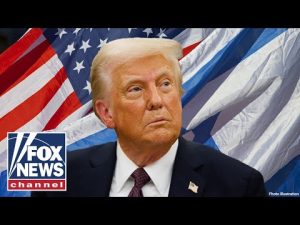In recent days, the issue of Antifa has resurfaced as a hot topic, drawing attention from both political leaders and the media. During a recent discussion, a concerned voice highlighted the reality of Antifa as a genuine threat to public order and safety. It’s a point often dismissed by some in the mainstream media and political circles who prefer to downplay this radical group’s influence. But as events unfold, it becomes increasingly clear that this isn’t just a fleeting crisis; it’s a call for urgent action.
Antifa has made its presence felt through protests and riots, with recent events in Portland serving as a glaring reminder of the chaos they can sow. Critics argue that Antifa lacks a traditional organizational structure, making it difficult for law enforcement to pin them down. However, this reasoning falls short when one examines the group’s actions. Law enforcement successfully intervenes against various criminal groups that operate without the niceties of formalized structure, like bank robbers and gangs. So, why should Antifa be any different?
The voice of concern emphasized that Antifa members don’t simply show up randomly dressed in similar attire, chanting slogans by coincidence. There is a clear ideology at play, and its proponents act in unison, often resulting in destructive escalations that threaten public safety. During the tumultuous riots of 2020, there was a tangible reveal of how extreme these factions can be, with some members even co-opting symbols associated with cartel violence. The claim was straightforward: what’s happening is political violence, and it’s predominantly manifesting from a radical leftist agenda.
One striking observation was that peaceful gatherings, particularly those of conservative groups, have been overshadowed by violent activities linked to the radical left. This raises a simple question: how can meaningful dialogue occur when one side is consistently promoting violence while the other strives for peaceful assembly? There’s a sense that the political landscape has shifted, and for those who believe in law and order, the current state of affairs feels like a precarious tightrope walk.
The ongoing immigration crisis further complicates the situation as the backlash against federal agencies becomes more pronounced. As activists and groups encourage aggression toward federal agents and law enforcement, the potential for chaos is not just a localized issue; it could erupt anywhere, spreading fear and disorder across the nation. It is becoming increasingly evident that this isn’t merely about specific ideologies but rather a fundamental clash over law, order, and the rights of citizens to feel safe in their communities.
In conclusion, while mainstream narratives might attempt to paint a softer picture of Antifa and its ilk, those who are witnessing the unrest first-hand recognize the seriousness of the situation. As law enforcement grapples with the unique challenges posed by such groups, citizens are left asking who will stand up to protect their homes and communities. Today’s America demands awareness, vigilance, and a decisive stand against any form of political violence, lest we allow fear to undermine the very fabric of our society. The time for action is now, and it begins with acknowledging the reality of threats that refuse to be ignored.







